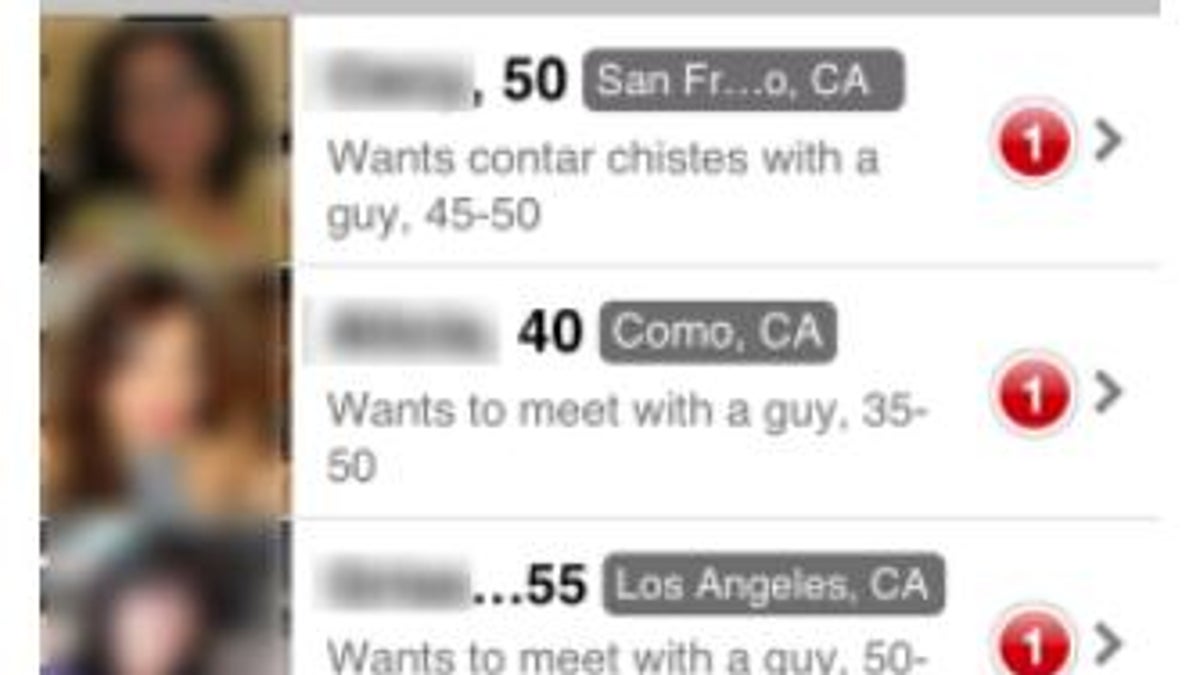Badoo: Social experiment or hookup site?
It's a social network for people you haven't met yet, but it's not a dating site. Or so they say.

There's a social network oozing into the U.S. that you probably haven't heard of yet: Badoo. I hadn't.
But this network has, I'm told, 130 million users around the world, with about 6 million in the U.S. How did that happen? And will it play in Peoria? Here's the story, in two parts.
Part 1: The high-minded theory
Badoo is a social site, but it's no Facebook. Where Facebook is the network of your friends (even if you define "friend" loosely), Badoo is a network for friends yet to be.
But neither is Badoo, strictly speaking, a dating service, according to CEO Andrey Andreev and CMO Jessica Powell. Rather, Badoo is designed to connect you to people nearby whom you don't yet know, for whatever purpose you like. As Powell says, it's like the offline world. "There's always the potential for flirting or dating, but along the way you might just make friends, or meet people you want to introduce your friends to."
Like Facebook, Badoo's design encourages people to keep coming back. "With a dating site, if you go there and are successful, you don't come back. In Badoo, you come back," says Powell.
Badoo is also a location-based social service. It's designed to help you find people nearby who share your interests, and there's a strong smartphone app. It's pitched as great if you're looking to hang with someone in a new city you're visiting, or connect with people at an event.
Powell told me that about 50 percent of the conversations on the service lead to real-world meetups, and that under 20 percent of the site's usage is around dating. These are both very interesting numbers for an online connection service.
I would say my conversation with Andreev and Powell went well. I was envisioning using Badoo to connect with cool people at crowded events like the Maker Faire, or maybe at industry conferences.
Then our meeting ended, and I tried the service.
Part 2: The low-down reality
The initial impression I got when I signed to the service: man, this is creepy. Immediately after signing on, with no photo or information in my profile, I was told that four women wanted to talk with me, one of whom was 382 miles away. Why? I was a blank box with nothing but an age and a location.
Actually, the entire sign-on process tells you a different story than the one the CEO and CMO told me. This is a photo-based dating site. About the only question you need to answer to get active on the service is if you want to meet a girl or a guy (or both) and their age. There is no concept of groups or networks of friends. Even the part where you enter in interests, to match with other users, is relatively obscure.
Then there's the revenue model: the service is free, but only to a point. To be featured on the top of the site's or the app's navigation bar as a nearby contact, you have to buy credits. To activate "super powers" (which allow your messages to go to contacts more quickly, among other things), you either pay with credits or contacts: you can invite other users to Badoo and the service will check your social networks for matches if you authorize it to do so. Other features require payment, too, and you can't do much before you bump into pay-me blocks. Otherwise, you'll feel hemmed in.
A site that's similar in some ways, HowAboutWe, feels more platonic than Badoo. And HowAboutWe has very clear dating mission.
Badoo appears to be all about the hookup. Now, there's nothing wrong with that, and it's a reasonable business to be in. There is, after all, one thing that people will always want, and one way or another, pay for.
And I do respect Powell's assertion that in Silicon Valley we tend to like the sterile, or as she put it, "desexified" product. Humans are needy, messy creatures, so why not build businesses that serve that reality?
The challenge is that if you have a sexy product, there's very little else that can bloom underneath it. Powell disagrees with this and said in an e-mail after we talked, "Dating only represents about 20 percent of how users make use of the site. I think Badoo is successful (far more so than dating sites, which are smaller) because it's not prescriptive. We give you the tools to meet people, then you decide what you want to do....I think most people go with some sort of 'romantic' hope, but along the way, they have all sorts of entertaining, flirty, and fun encounters."
I was also told, "Dating is a popular initial use case, and we expect the U.S. to follow the pattern of our other high-usage countries, where the uses broaden out over time and as the site scales."
My exposure to Badoo has been brief, but to me it seems like a gritty, real connection service, not the ongoing social experiment that I was eager to try before I experienced what it really was. Perhaps Badoo will expand beyond "flirting" in the U.S., but I can't imagine going back to it for anything but that.
Badoo raised $30 million from Russian investor group Finam in 2007. Powell told me the company has an annual run rate of $150 million, from about 1 million paying users every month.

